#Monitoring IoT Devices
Text
Revolutionizing Power Grid Management: Transformer Monitoring with GSM Technology
In the realm of power distribution, transformers serve as vital components, facilitating the efficient transmission of electricity across the grid. However, ensuring the optimal performance and reliability of transformers poses significant challenges for utility companies. Traditional monitoring methods often fall short in providing real-time insights and proactive maintenance. Enter GSM (Global System for Mobile Communications) technology—a game-changer in transformer monitoring. In this article, we explore how GSM technology is revolutionizing transformer monitoring, enhancing efficiency, reliability, and safety in power grid management.
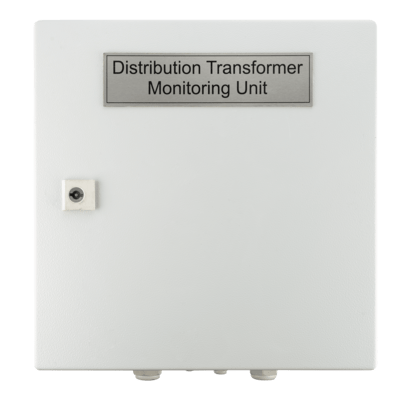
Understanding Transformer Monitoring with GSM
Transformer monitoring involves the continuous observation and analysis of key parameters such as temperature, oil level, load, and insulation condition to assess the health and performance of transformers. GSM technology enables remote monitoring of transformers by leveraging cellular networks to transmit real-time data to central monitoring systems. This allows utility companies to monitor transformer status, detect anomalies, and initiate preventive maintenance actions from anywhere, at any time.
Benefits of Transformer Monitoring with GSM
Real-Time Monitoring: GSM-enabled transformer monitoring systems provide real-time visibility into transformer health and performance, allowing utility companies to identify issues promptly and take corrective action before they escalate.
Remote Accessibility: With GSM technology, transformer data can be accessed remotely via web-based platforms or mobile applications, enabling utility operators to monitor transformers from anywhere with internet connectivity.
Predictive Maintenance: By analyzing data collected from GSM-enabled sensors, utility companies can implement predictive maintenance strategies to anticipate equipment failures and schedule maintenance activities proactively, minimizing downtime and optimizing asset lifespan.
Cost Savings: Transformer monitoring with GSM technology reduces the need for manual inspections and onsite visits, leading to cost savings in labor, travel, and maintenance expenses.
Enhanced Safety: Timely detection of abnormalities and early intervention facilitated by GSM-enabled monitoring systems contribute to safer operation of transformers, reducing the risk of equipment failures, accidents, and power outages.
Key Features of GSM-enabled Transformer Monitoring Systems
Sensor Integration: GSM-enabled monitoring systems integrate sensors to measure various parameters such as temperature, oil level, humidity, and gas concentrations, providing comprehensive insights into transformer health and performance.
Data Transmission: GSM technology enables wireless transmission of sensor data to central monitoring systems using cellular networks, ensuring reliable and secure communication even in remote locations.
Alerting and Notification: Transformer monitoring systems equipped with GSM functionality can generate alerts and notifications via SMS, email, or mobile applications to notify operators of critical events or deviations from normal operating conditions.
Data Analytics: Advanced analytics capabilities allow utility companies to analyze historical data, identify trends, and generate actionable insights to optimize transformer maintenance strategies and improve operational efficiency.
Case Study: Implementation of GSM-enabled Transformer Monitoring
Utility Company X, faced with the challenge of maintaining an aging transformer fleet spread across a vast geographical area, implemented a GSM-enabled transformer monitoring system. Equipped with temperature sensors, oil level monitors, and GSM communication modules, the monitoring system provided real-time data on transformer health and performance. By analyzing the data collected from the monitoring system, Utility Company X was able to detect early signs of overheating in a transformer, allowing them to schedule preventive maintenance and avoid a potential failure that could have resulted in costly downtime and service disruptions.
Future Outlook and Emerging Trends
As technology continues to evolve, the future of transformer monitoring with GSM technology holds promise for further innovation and advancement. Some emerging trends and developments include:
Integration with IoT: Integration of GSM-enabled transformer monitoring systems with IoT platforms enables seamless connectivity, interoperability, and data exchange with other smart grid devices and systems.
AI and Predictive Analytics: The integration of artificial intelligence and machine learning algorithms enhances the predictive capabilities of transformer monitoring systems, enabling more accurate fault detection, diagnosis, and prognosis.
Edge Computing: The adoption of edge computing technology allows for local processing and analysis of sensor data at the transformer site, reducing latency and bandwidth requirements for data transmission to central monitoring systems.
Cybersecurity: Continued focus on cybersecurity measures to protect GSM-enabled transformer monitoring systems from cyber threats, ensuring data integrity, confidentiality, and system reliability.
In conclusion, transformer monitoring with GSM technology represents a significant advancement in power grid management, offering utility companies real-time visibility, remote accessibility, and predictive insights into transformer health and performance. By embracing GSM-enabled monitoring systems and leveraging emerging technologies, utility companies can enhance the efficiency, reliability, and safety of power distribution networks, ensuring uninterrupted electricity supply for consumers and businesses alike.
0 notes
Text
grateful to know what certain words mean. deeply annoyed that the words themselves are so engrained into pop culture that they end up losing meaning
#op#for once this isn’t about the word gaslighting#someone told me I was. fearmongering by describing the way IOT devices can be used to rob you#because someone ASKED#they ASKED why it would be bad if a baby monitor got hacked#and I answered#and someone goes ‘yikes ://// fearmongering are we’#like what exactly do you think I’m gaining from this dude#in what way do I profit from describing a spooky thing that is possible#do I look like the six o clock news to you
101 notes
·
View notes
Text
How to ByPass the TikTok Ban
This guide will show you how to bypass the a TikTok Ban step-by-step. Before we get started, let’s just acknowledge that TikTok definitely does not meet our criteria for an application that respects users privacy. So why help users bypass the TikTok Ban? The answer is that banning apps, websites, speech, communication, or just parts of the Internet in general poses a much greater threat to free…

View On WordPress
#corporate#dataprivacy#dataprotection#freespeech#Government#internet#internet of things#IoT#monitoring#privacy#smart devices#smart phone#spying#surveillance#surveillance capitalism#surveillance economy#tiktok#tiktokban
6 notes
·
View notes
Text
The Benefits of Water Tank Level Monitoring Systems
In addition to real-time monitoring, IoT tank level monitoring systems often offer features such as predictive analytics, automated alerts, and remote control capabilities. These systems can be integrated with cloud platforms for data storage and analysis, allowing users to access historical data and generate insights for optimization. By leveraging IoT technology, water tank level monitoring becomes more efficient, cost-effective, and environmentally sustainable, making it a valuable tool for various industries, including agriculture, municipal water management, and industrial applications.
What is water tank level monitoring?

A water tank level monitoring system functions by gauging the water level within a tank and transmitting this data to a distant location. Configurable alerts can be established to notify users of both low and high water levels, effectively mitigating water wastage, tank damage, and associated concerns. Moreover, certain systems possess the capability to oversee additional parameters such as water quality and temperature, enhancing their utility in managing water resources effectively.
WiFi water tank level monitor
WiFi water tank level monitors connect to local WiFi networks, leveraging IoT device monitoring technology.
Sensors integrated into these monitors measure water levels in tanks accurately.
Data collected by the monitors is transmitted to a cloud-based platform accessible via smartphone apps or web interfaces.
Users can conveniently access real-time data, review historical trends, and receive alerts for low water levels remotely.
This IoT device monitoring technology proves beneficial for homeowners, businesses, and farmers alike, offering convenient access to water usage information for efficient resource management.
Remote water tank level monitoring
Remote water tank level monitoring, facilitated by IoT monitoring technology, entails the deployment of sensors to gauge the water level in a tank and subsequently relay this data to a distant location. This transmission can be achieved through various channels such as satellite, cellular, or radio communication. IoT monitoring for water tank levels offers significant advantages, particularly in expansive operations like agricultural irrigation systems, where water tanks are dispersed across vast areas.
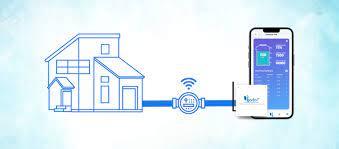
The primary advantage of employing IoT monitoring for remote water tank level management lies in its capacity to enhance water resource management. By leveraging IoT monitoring, users can remotely track water levels, enabling them to optimize water usage, minimize wastage, and prevent potential water shortages. This proactive approach can ultimately result in increased crop yields, reduced operational costs, and a stronger commitment to sustainability.
Who stands to gain from employing a water tank level monitoring system?
Homeowners - Those dependent on rainwater or facing water constraints can profit from employing a water tank level monitoring system. Through monitoring their water consumption, they can refine their usage patterns, avert shortages, and curtail expenses.
Businesses - Enterprises like car washes, laundromats, and eateries heavily reliant on water in their daily operations can reap benefits from implementing a water tank level monitoring system. By tracking water consumption, they can streamline processes, minimize wastage, and champion sustainability.
Agriculture - Farmers utilizing irrigation systems can leverage a water tank level monitoring system to their advantage. Monitoring water consumption enables them to optimize irrigation schedules, diminish waste, and enhance crop productivity.
The advantages of employing a water tank level monitoring system
Minimizing water wastage Employing a water tank level monitoring system offers a key advantage in curtailing water wastage. By continuously tracking water levels in real-time, users can promptly detect leaks or other issues that might lead to unnecessary water loss. Additionally, they can regulate water usage to prevent tank overfilling, mitigating the risk of water spillage.
Preventing tank damage Water tanks are susceptible to damage when water levels fluctuate excessively. Low water levels can result in pump damage due to running dry, while high levels may cause overflow and harm to both the tank and its surroundings. Real-time water level monitoring empowers users to avert these risks, ensuring the tank remains in optimal condition.
Mitigating water shortages The risk of water shortages arises when tank water levels dip too low, unable to meet demand. Through continuous monitoring, users can proactively identify decreasing water levels and take preemptive measures to replenish the supply before depletion occurs. This proactive approach is particularly critical in regions with limited or unreliable water sources.
Enhancing operational efficiency Water tank level monitoring systems play a pivotal role in enhancing efficiency by optimizing water utilization. By analyzing water usage patterns, users can pinpoint opportunities to streamline consumption without compromising operational requirements. For instance, businesses can refine equipment usage or adjust processes to achieve water savings.
Fostering sustainability Embracing IoT tank level monitoring systems serves as a catalyst for sustainability efforts by curbing water wastage, averting shortages, and optimizing consumption. Such measures contribute to the preservation of water resources and diminish the ecological footprint associated with human activities.
IoT tank level monitoring offers efficient and real-time insights into water levels, enabling proactive management and conservation efforts. Through sensors and connectivity, it optimizes resource utilization, enhances maintenance, and minimizes waste, fostering sustainable water management practices.
0 notes
Text
Smart Pacifiers Market will drive parenting innovation owing to growing demand for baby monitoring and soothing

The smart pacifier market has witnessed significant growth in recent years owing to technological innovations that provide parents with new ways to monitor and soothe their infants. Smart pacifiers are being integrated with sensors, trackers, and soothing functions that help parents gain insights into their baby's wellbeing and behavior from a distance. Advantages such as motion and breathing monitoring, temperature tracking, and two-way audio allow parents to check on babies remotely while ensuring their safety and comfort.
The Global Smart Pacifier Market Size is estimated to be valued at US$ 640.2 Mn in 2024 and is expected to exhibit a CAGR of 5.4% over the forecast period 2024 to 2031.
Key Takeaways
Key players operating in the smart pacifier market include Brainchild Technologies, LLC, Root3 Labs, BlueMaestro, Washington State University, NiNite , and Nouvo Health. These companies are integrating innovative technologies like sensors, wireless connectivity, and soothing audio/vibrations into traditional pacifier designs.
Explore More Related Topic: Smart Pacifiers Market
Get More Insights On This Topic: Smart Pacifiers Market
#Smart Pacifier#Baby Tech#Infant Health#Parenting Gadgets#Wearable Technology#Baby Monitoring#IoT Devices#Childcare Innovation
1 note
·
View note
Text
IoT Development; A Complete Guide, on Bringing Devices from Idea to Implementation
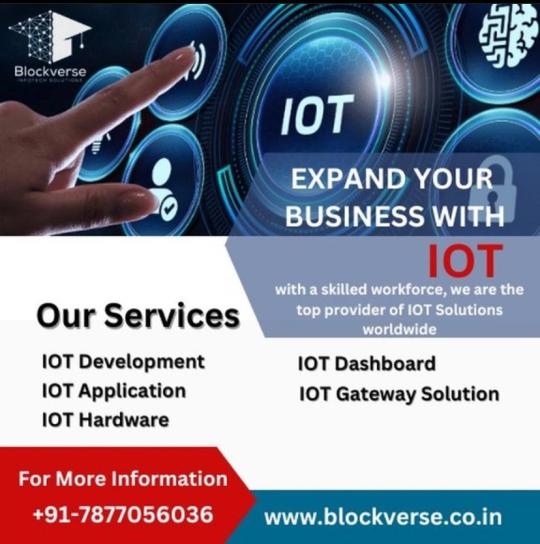
In todays paced tech world, the Internet of Things (IoT) has emerged as a game changer transforming the way we engage with our environment. At Blockverse Infotech Solutions we recognize the power of devices providing customized solutions to bring ideas to life and seamlessly integrate them into the digital realm.
The Internet of Things (IoT) has evolved from a buzzword to an aspect of contemporary technology influencing various facets of our everyday routines. From homes and wearable gadgets to automation and healthcare systems IoT enables us to connect and empower ourselves like never before. However transitioning from conceptualization to implementation of solutions can be overwhelming without guidance.
Conceptualization marks the phase, in IoT development. It entails identifying the problem or opportunity that can be addressed through technology and envisioning how interconnected devices can improve efficiency, convenience or safety. At Blockverse Infotech Solutions we work closely with clients to brainstorm ideas grasp their needs and devise IoT solutions tailored specifically for them.
Once the concept is solidified, the development phase begins. This involves designing and prototyping IoT devices, selecting appropriate sensors and connectivity protocols, and developing the software infrastructure to collect, analyze, and act upon data generated by the devices. Our team of skilled developers and engineers at Blockverse Infotech Solutions leverages cutting-edge technologies to build robust and scalable IoT solutions that meet the highest standards of performance and reliability.
Testing and validation are integral parts of the development process, ensuring that IoT devices function as intended and deliver the desired outcomes. Through rigorous testing procedures and simulation environments, we identify and rectify any issues or vulnerabilities, ensuring that the deployed IoT solutions operate seamlessly in real-world scenarios.
Deployment marks the culmination of the IoT development journey, as the solutions are implemented and integrated into existing systems or environments. From device provisioning and network configuration to data management and security protocols, our experts at Blockverse Infotech Solutions handle every aspect of the deployment process with precision and care, ensuring a smooth transition from development to operation.
Post-deployment support and maintenance are essential for ensuring the long-term success and sustainability of IoT solutions. At Blockverse Infotech Solutions, we offer comprehensive support services, including monitoring, troubleshooting, and software updates, to keep IoT devices running smoothly and efficiently.
In conclusion, navigating the complex landscape of IoT development requires expertise, innovation, and a comprehensive understanding of the technology. With Blockverse Infotech Solutions providing tailored solutions for IoT devices, businesses and organizations can embark on their IoT journey with confidence, knowing that they have a trusted partner to guide them from concept to deployment and beyond.
#internet of things#iot#iot devices#iot projects#iot applications#iot development company#iot device management software#embedded system design#iot device management app#embedded operating system#iot monitoring software#embedded systems#what is embedded system
0 notes
Text
Synchronized Solutions: Navigating Through Smart Water Meters
In the era of digital transformation, Smart Water Meters play a crucial role in modernizing the way we manage water resources. These intelligent devices utilize advanced sensors and communication technologies to provide a constant stream of data on water consumption. This real-time information empowers consumers to make informed decisions about their usage, fostering a culture of water conservation. Municipalities and utility companies also benefit from the streamlined data collection, allowing for proactive leak detection and efficient resource allocation. With their ability to contribute to sustainable water practices, Smart Water Meters represent a significant step towards building a more resilient and environmentally conscious water infrastructure.
0 notes
Text
BLIIoT
Remote Monitoring RTU
S475 used in Smart Greenhouse Monitoring
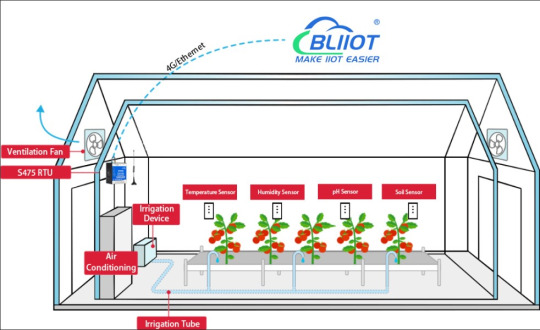
Introduction
With the continuous development of modern agriculture, greenhouse management is becoming intelligent and technological. Under this trend, the remote monitoring RTU gateway S475 supports multi-IO channels to collect sensor and device data, providing innovative solutions for greenhouse monitoring.
Greenhouse monitoring needs
The production environment of the greenhouse is affected by many factors, including temperature, humidity, light intensity, soil moisture, wind speed, wind direction, air pressure, etc. To accurately monitor these critical parameters, the S475 enables comprehensive monitoring of the greenhouse environment through analog and digital data acquisition capabilities.
Application scenarios
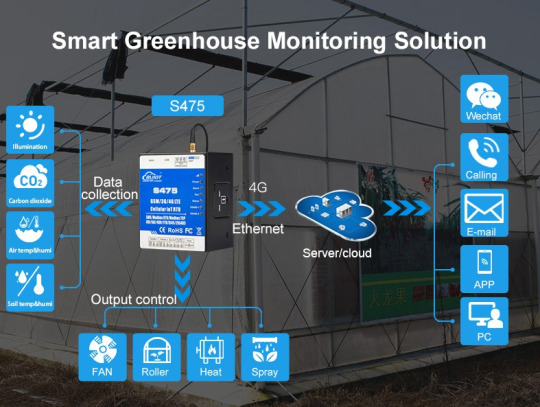
In actual greenhouse monitoring, S475 plays an irreplaceable role. Through real-time data collection and monitoring, the equipment can ensure that various parameters in the greenhouse are within the ideal range. At the same time, the device supports the setting of high and low limit parameters. Once an abnormal environment is detected, the S475 will notify relevant personnel through SMS, WeChat or phone alarms to ensure timely measures are taken. The remote control function also provides flexibility for greenhouses. For example, the status of doors and windows can be remotely controlled to optimize the greenhouse environment.
Benefits and Advantages
The application of S475 in greenhouse monitoring has brought significant benefits and advantages to agricultural production. First of all, the equipment improves production efficiency. Through data monitoring and alarm systems, farmers can respond to environmental changes in a more timely manner and ensure the steady growth of plants. Secondly, the remote monitoring and control function of S475 reduces labor costs. Farmers can remotely monitor the greenhouse status from any location and make timely adjustments without having to go to the site in person.
In Conclusion
The application of S475 has injected new vitality into greenhouse monitoring and promoted the development of agricultural management in a more intelligent and efficient direction. With the continuous advancement of Internet of Things technology, the application prospects of S475 in the agricultural field will be broader, providing strong support for the sustainable development of agricultural production. This innovative solution is not only an advancement in greenhouse monitoring, but also an epitome of modern agricultural intelligence.
More information about Remote Monitoring RTU S475: https://www.bliiot.com/remote-terminal-units-p00178p1.html
0 notes
Text
What Is An IoT Platform?
In today’s rapidly evolving technological landscape, the Internet of Things (IoT) has emerged as a game-changer, transforming the way we interact with the world around us. Central to the success of IoT implementations is the concept of an “IoT platform.” If you’re new to this exciting world, this blog will guide you through the fundamentals of what an IoT platform is, its capabilities, how it works, different types available, how to choose the right one, and the essential features you should look for.
What is an IoT Platform?
At its core, an IoT platform is a comprehensive software solution that serves as the backbone for connecting, managing, and analyzing IoT devices and data. Think of it as a unifying hub that brings together various components of an IoT ecosystem, from devices and sensors to applications and analytics tools. The primary goal of an IoT platform is to simplify the complexities of IoT deployments, enabling seamless communication and interaction between devices, users, and systems.
How Does an IoT Platform Work?
IoT platforms work by enabling devices to communicate with each other and with central management systems via the internet. Here’s a simplified breakdown of the process:
1. Data Collection:
IoT devices equipped with sensors collect data from their surroundings. This data can include temperature readings, location information, energy consumption, and much more.
2. Data Transmission:
The collected data is transmitted to the IoT platform through wired or wireless connections. These connections can be cellular networks, Wi-Fi, Bluetooth, or even low-power options like LoRaWAN.
3. Data Storage and Processing:
The platform stores and processes the incoming data. It can perform data filtering, aggregation, and analysis, extracting meaningful insights from the raw data.
4. Decision-Making:
Based on the analyzed data, the platform can trigger automated actions or alerts. For instance, if a temperature sensor detects a critical rise in temperature in a manufacturing facility, the platform can send alerts to relevant personnel.
5. User Interfaces and Applications:
IoT platforms provide user interfaces and APIs that allow developers to create applications that visualize and interact with the data. These applications can be accessed through web browsers or mobile devices.
Different Types of IoT Platforms
There are many different types of IoT platforms available, each with its own strengths and weaknesses. Some of the most common types of IoT platforms include:
1. Cloud-based platforms:
These platforms are hosted on the cloud and provide a variety of features, including device management, data storage, data analytics, and security. Cloud-based platforms are a good choice for businesses that need to manage a large number of devices or that need to scale their IoT solution quickly.
2. On-premises platforms:
These platforms are installed and hosted on-premises, giving businesses more control over their data and security. On-premises platforms are a good choice for businesses that have specific security requirements or that need to comply with regulations.
3. Hybrid platforms:
These platforms combine the features of cloud-based and on-premises platforms. Hybrid platforms can be a good choice for businesses that need the flexibility of a cloud-based platform but also want the control and security of an on-premises platform.
4. Open source platforms:
These platforms are free and open-source, which means that they can be customized and extended to meet the specific needs of businesses. Open source platforms are a good choice for businesses that want to save money or that need a high level of flexibility and customization.
5. Proprietary platforms:
These platforms are developed and owned by a single vendor, which means that they are not customizable or extensible. Proprietary platforms are a good choice for businesses that want a turnkey solution that is easy to deploy and manage.
The best type of IoT platform for a particular business will depend on its specific needs and requirements. Businesses should carefully consider their needs before choosing an IoT platform.
How to Choose an IoT Platform
Choosing the right IoT platform is crucial to the success of your IoT initiatives. Here are some pointers to consider:
1.Scalability:
Ensure the platform can accommodate your growth needs as you add more devices and users.
2. Interoperability:
Look for a platform that supports a wide range of devices, protocols, and communication methods.
3. Security:
Prioritize platforms that offer robust security features to protect data and devices from cyber threats.
4. Analytics and Insights:
Consider platforms with advanced analytics capabilities to turn raw data into actionable insights.
5. Ease of Use:
Opt for platforms with user-friendly interfaces and tools that simplify device management and application development.
6. Integration:
Choose a platform that can seamlessly integrate with your existing systems and technologies.
Features of an IoT Platform
A comprehensive IoT platform should possess the following features:
1.Device management:
This includes the ability to onboard devices, monitor their status, and remotely control them. This is essential for managing a large number of devices and ensuring that they are operating correctly.
2. Data storage:
The platform must be able to store large amounts of data from IoT devices in a reliable and secure way. This data can be used to generate insights and improve decision-making.
3. Data analytics:
The platform must be able to process and analyze data from IoT devices to derive valuable insights. This can help businesses to improve efficiency, optimize operations, and make better decisions.
4. Security:
The platform must be secure to protect data and devices from unauthorized access, tampering, and cyberattacks. This is essential for ensuring the trust and confidence of users and stakeholders.
5. Connectivity:
The platform must support a variety of communication protocols and networks to connect IoT devices to the internet. This allows devices to communicate with each other and with the platform.
6. Application development:
The platform must provide tools and frameworks for developers to build and deploy IoT applications. This makes it easy to create custom applications that meet the specific needs of businesses.
7. Scalability:
The platform must be able to scale to handle a growing number of devices and users. This is essential for meeting the needs of businesses as they grow and expand.
8. User interfaces:
The platform must provide intuitive user interfaces for managing devices and accessing insights. This makes it easy for users to interact with the platform and get the most out of it.
Conclusion
In the world of IoT, platforms play a pivotal role in enabling seamless connectivity, data management, and application development. As a beginner, understanding the concept and capabilities of IoT platforms provides you with a solid foundation to explore the endless possibilities of IoT technology. Whether you’re a developer, business owner, or simply curious about IoT, these platforms are your gateway to a smarter and more connected future.
0 notes
Text
#iot companies in abu dhabi#iot solutions in uae#iot solutions in bur dubai#iot companies in bur dubai#iot solutions in ajman#iot solution saudi arabia#iot solution in bur dubai#iot companies in alain#iot solutions#iot companies in uae#iot tracking system abu dhabi#iot ai solution in bur dubai#iot smart devices in uae#iot real time monitoring system uae#iot real time monitoring system abu dhabi#iot real time monitoring system ajman#iot real time monitoring system bur dubai#iot real time monitoring system alain#iot smart cities solutions#iot smart cities solutions dubai#iot smart cities solutions abu dhabi#iot smart cities solutions in bur dubai#iot smart cities solutions
0 notes
Text
Navigating the Digital Landscape: The Art of Monitoring IoT Devices
In the era of digital transformation, where connectivity is king and data reigns supreme, the monitoring of IoT devices has become a cornerstone of efficient operations and effective management. As the Internet of Things (IoT) continues to proliferate across industries, the ability to monitor and manage connected devices in real-time has become essential for ensuring optimal performance, security, and reliability. In this article, we delve into the intricacies of monitoring IoT devices, exploring best practices, challenges, and the transformative potential of proactive device management.

Understanding the Importance of Monitoring IoT Devices
At its core, monitoring IoT devices involves the continuous observation and analysis of device health, performance, and activity. This includes monitoring parameters such as connectivity status, data transmission rates, power consumption, and environmental conditions. The importance of monitoring IoT devices can be summarized as follows:
Proactive Issue Detection: By monitoring IoT devices in real-time, organizations can detect and address issues before they escalate into costly downtime or service disruptions. Early detection of anomalies allows for prompt troubleshooting and intervention, minimizing the impact on operations.
Optimization of Performance: Monitoring IoT devices enables organizations to identify opportunities for performance optimization and resource allocation. By analyzing device metrics and trends, organizations can fine-tune settings, allocate resources efficiently, and maximize the value derived from IoT deployments.
Enhanced Security: Monitoring IoT devices for suspicious activity or security breaches is essential for safeguarding sensitive data and protecting against cyber threats. Real-time monitoring enables organizations to detect and respond to security incidents promptly, mitigating risks and ensuring compliance with regulatory requirements.
Data-Driven Decision Making: The data collected through monitoring IoT devices provides valuable insights into device behavior, usage patterns, and performance trends. This data-driven approach enables organizations to make informed decisions, optimize processes, and drive continuous improvement in IoT deployments.
Best Practices for Monitoring IoT Devices
To effectively monitor IoT devices, organizations should adhere to best practices that ensure comprehensive coverage, proactive management, and actionable insights. Some key best practices include:
Comprehensive Monitoring: Implement monitoring solutions that provide visibility into all aspects of IoT device performance, including connectivity, data transmission, power consumption, and environmental conditions. Utilize monitoring tools capable of collecting and analyzing data from diverse sources, such as sensors, gateways, and cloud platforms.
Real-Time Alerting: Configure alerting mechanisms to notify stakeholders of abnormal behavior, performance degradation, or security incidents in real-time. Define thresholds and triggers for alerts based on predefined criteria, ensuring timely response and intervention when anomalies occur.
Predictive Analytics: Leverage predictive analytics and machine learning algorithms to forecast potential issues and trends based on historical data. By analyzing patterns and correlations in device metrics, organizations can anticipate problems before they arise and take proactive measures to mitigate risks.
Integration with IT Infrastructure: Integrate IoT device monitoring solutions with existing IT infrastructure management systems, such as network monitoring tools and service desk platforms. This enables centralized monitoring and management of IoT devices alongside other IT assets, facilitating streamlined operations and collaboration across teams.
Continuous Improvement: Continuously evaluate and refine monitoring strategies based on feedback, performance metrics, and evolving requirements. Regularly review and update monitoring configurations, alerting rules, and reporting mechanisms to ensure alignment with organizational goals and objectives.
Challenges and Considerations
While monitoring IoT devices offers numerous benefits, organizations may encounter challenges and considerations that impact the effectiveness of their monitoring efforts. Some common challenges include:
Scalability: As IoT deployments scale up in size and complexity, managing and monitoring a large number of devices becomes increasingly challenging. Organizations must implement scalable monitoring solutions capable of handling growing volumes of data and devices.
Interoperability: Ensuring interoperability and compatibility among diverse IoT devices and protocols is essential for effective monitoring. Organizations may face integration challenges when dealing with heterogeneous IoT ecosystems comprising devices from different vendors and standards.
Data Security and Privacy: Protecting sensitive data collected from IoT devices against unauthorized access, breaches, and misuse is a paramount concern. Resource Constraints: Limited resources, such as bandwidth, processing power, and storage capacity, may constrain the effectiveness of IoT device monitoring. Organizations must balance the trade-offs between monitoring granularity and resource consumption to optimize performance and cost-effectiveness.
The Future of IoT Device Monitoring
Looking ahead, the future of IoT device monitoring holds exciting possibilities driven by advancements in technology and evolving industry trends. Some emerging trends shaping the future of IoT device monitoring include:
Edge Computing: The integration of edge computing capabilities into IoT devices enables real-time processing and analysis of data at the network edge, reducing latency and bandwidth requirements for monitoring applications.
AI and Machine Learning: The adoption of AI and machine learning techniques enhances the intelligence of IoT device monitoring systems, enabling predictive analytics, anomaly detection, and automated remediation of issues.
Blockchain for Security: The use of blockchain technology to secure and authenticate data collected from IoT devices ensures data integrity, transparency, and traceability, enhancing trust and compliance in monitoring operations.
5G Connectivity: The rollout of 5G networks promises faster data transmission rates, lower latency, and greater reliability, enabling more efficient and responsive IoT device monitoring applications.
In conclusion, monitoring IoT devices is essential for ensuring the reliability, performance, and security of connected environments in the digital age. By adhering to best practices, addressing challenges, and embracing emerging technologies, organizations can unlock the full potential of IoT device monitoring to drive innovation, efficiency, and resilience in their operations.
0 notes
Text
The Impact of Internet of Things on Healthcare
With the development of IoT-enabled healthcare solutions in recent years, the healthcare sector has undergone a digital transformation. A network of linked devices that gather and exchange data online is known as the Internet of Things (IoT).
IoT has made it possible to create medical equipment and health monitoring tools that can keep tabs on patients remotely and send information to medical…
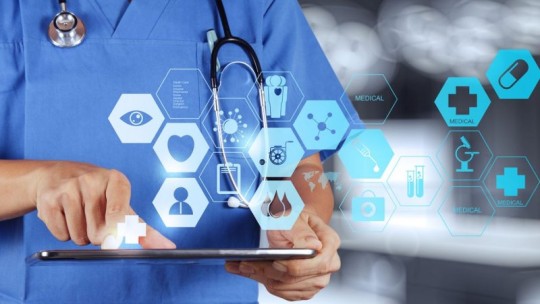
View On WordPress
#Health monitoring devices#IoT in Healthcare#IoT in healthcare devices#Medical devices#patient records#Remote patient monitoring
0 notes
Text
Amazon 'cutewashes' surveillance with its new Ring doorbell TV show
Amazon ‘cutewashes’ surveillance with its new Ring doorbell TV show
For a “normal” company, having a TV series with your product as the star would be an impossible dream. But Amazon is not a normal company. The latest evidence that this is so comes from the recent announcement of a new Funniest Home Videos-style show, hosted by Wanda Sykes and with a built-in surveillance-society twist: It consists entirely of entertaining clips captured by camera-equipped Ring…
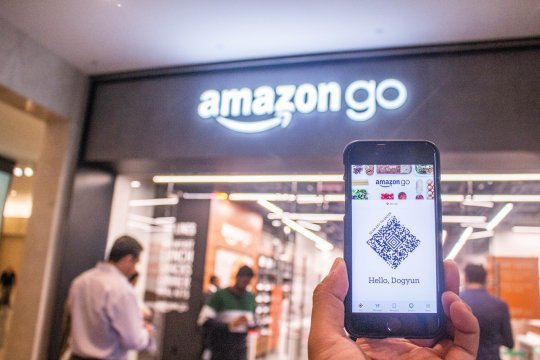
View On WordPress
#amazon#dataprivacy#internet of things#IoT#monitoring#smart city#smart devices#smart home#spying#surveillance capitalism
2 notes
·
View notes
Text

Building Resilience: Industrial IoT's Role in Risk Management
The advent of Industrial IoT is revolutionizing the manufacturing landscape, ushering in an era of unprecedented efficiency, agility, and innovation. By connecting machines, sensors, and actuators to the internet, organizations can create intelligent ecosystems that optimize production processes, minimize downtime, and enhance product quality. Industrial IoT solutions enable predictive maintenance, leveraging real-time data to anticipate equipment failures and schedule repairs proactively. Additionally, by analyzing the wealth of data generated by interconnected devices, businesses can uncover valuable insights into operational performance, customer preferences, and market trends, driving informed decision-making and strategic growth initiatives.
0 notes
Text
AI and IoT applications will enhance the user experience and add value to smart homes by making life more secure, comfortable, convenient, and safe. To know more about browse: https://teksun.com/ Contact us ID: [email protected]
#AI#IoT#Smart home technology#Home automation#Smart devices#Machine learning#Voice assistants#Energy efficiency#Home security#Remote monitoring#Connected devices#Home sensors
0 notes
Text
IoT and Wearable Health Care Technology: Improving Our Health and Well-Being
Have you ever thought about how technology can improve our health and well-being? The Internet of Things (IoT) is revolutionizing the healthcare industry by enabling wearable health care technology. With wearable devices that can monitor our health in real-time, we can make informed decisions to improve our overall health.
From fitness trackers that monitor our physical activity levels to smartwatches that track our heart rate and sleep patterns, wearable health care technology is changing the way we think about our health. These devices provide us with valuable insights into our health, allowing us to identify any potential health issues early and take proactive measures to improve our well-being.
But it's not just wearable devices that are making an impact in the world of health care. The integration of artificial intelligence (AI) in wearable health care technology is also playing a significant role. AI-powered devices can analyze large amounts of data and provide personalized health recommendations based on our individual needs. This has the potential to revolutionize the way healthcare professionals diagnose and treat various health conditions.
So what does the future of wearable health care technology look like? With the rapid advancements in technology, we can expect to see even more innovative devices being developed in the coming years. The integration of IoT and AI in wearable health care technology will lead to the development of devices that can provide real-time monitoring and analysis of our health, allowing us to make informed decisions about our well-being.
In conclusion, wearable health care technology is changing the way we think about our health and well-being. With continuous monitoring and personalized health recommendations, we can take control of our health and improve our quality of life. So embrace the future of health care and start exploring the world of wearable health care technology today!
#IoT#wearable health care technology#health monitoring#fitness trackers#smartwatches#medical devices#continuous monitoring#artificial intelligence#personalized health recommendations
0 notes